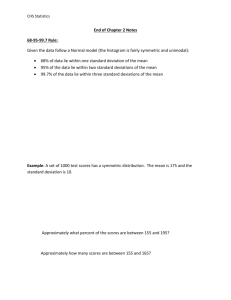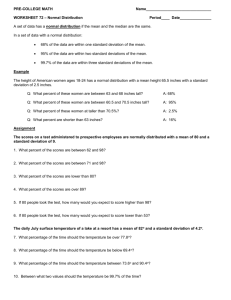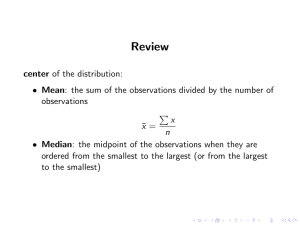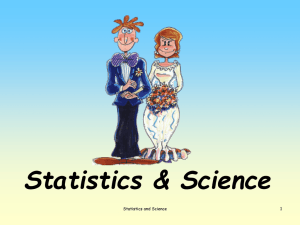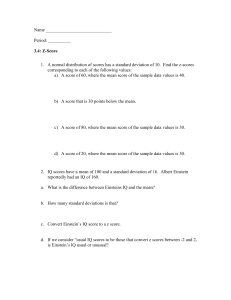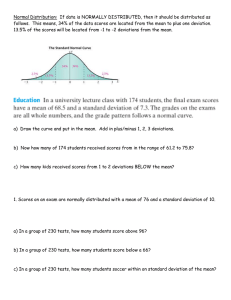The Empirical Rule: (Also known as the “Three Sigma Rule”) When
advertisement
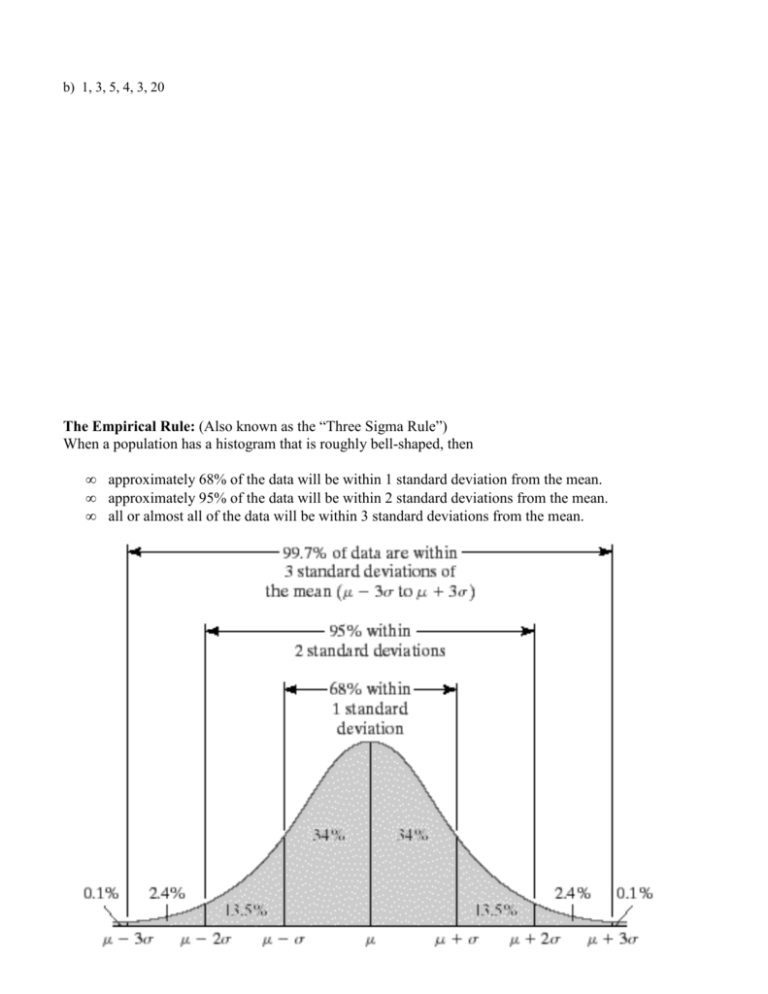
b) 1, 3, 5, 4, 3, 20 The Empirical Rule: (Also known as the “Three Sigma Rule”) When a population has a histogram that is roughly bell-shaped, then • • • approximately 68% of the data will be within 1 standard deviation from the mean. approximately 95% of the data will be within 2 standard deviations from the mean. all or almost all of the data will be within 3 standard deviations from the mean. Example: The GMAC Insurance company reported that the mean score on the 2009 National Drivers Test was 76.6, with a standard deviation of 2.7 points. The test scores are approximately bell-shaped. Estimate the percent of participants in the test who had scores between a) 68.5 and 84.7 b) 73.9 and 79.3 c) Between what two values will approximately 95% of the scores be? Example: A certain type of bolt used in an aircraft must have a length between 122 and 128 millimeters in order to be acceptable. The manufacturing process produces bolts whose mean length is 125 millimeters with a standard deviation of 1 millimeter with a bellshaped distribution of lengths. Can you be sure that more than 95% of the bolts are acceptable? Explain.


